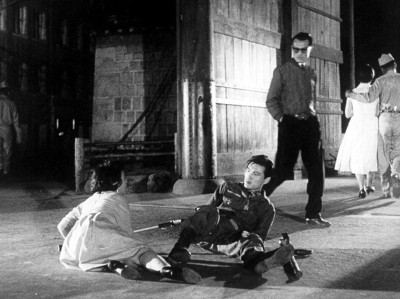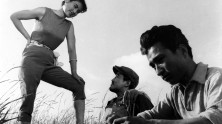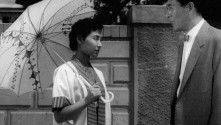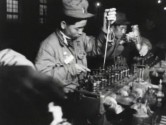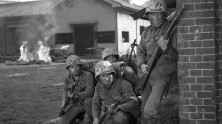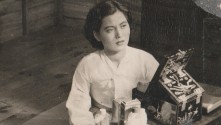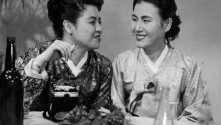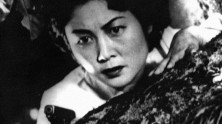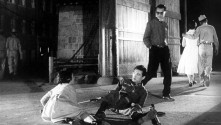
USIS-Korea Film Program
This special program casts light on the multilayered influences of the United States Information Service-Korea (USIS-Korea) on Korean cinema. Years before the signing of the alliance treaty, USIS-Korea already led the production and distribution of films with the goal of propagating American liberal democracy. It was also at the forefront of psychological warfare throughout the Korean War, becoming even more powerful with its cutting-edge film studio founded in Sang-nam in 1952.
In accordance with Eisenhower’s emphasis on the weaponization of mass media in 1953, the same year when the Korean Armistice Agreement and the alliance treaty were signed, USIS-Korea’s influence on the Korean film industry became even more substantial and multifaceted. While the wartime propaganda was strictly anti-communist, postwar USIS film projects were conceived as long-term investments for consolidating the ROK-US alliance by arousing support for the US, underlining the superpower’s contribution to South Korea’s reconstruction or praising Korea’s tradition as a token of mutual respect. Among many USIS posts across the globe, USIS-Korea was one of the few that not only distributed imported films but also produced films for local audiences.
Many USIS-Korea affiliates later became leading figures in the Korean film industry, building off of their experience with advanced filmmaking tools and techniques. While absorbing the latest technology, these directors also proceeded to make films that indirectly criticized the Korean government or the indoctrination of “American values.” The three films compiled in this program show the various directions films of USIS-Korea took, despite being produced with seemingly straightforward anti-communist agendas.
Acclaimed as a pioneer of experimental aesthetics in Korea, Kim Ki-young is mostly known for reflecting on the disorienting aspect of Korea’s modernization with grotesque images in works from the 1960s and 70s, particularly The Housemaid and The Insect Woman. I Am a Truck, which Kim directed as a USIS-Korea affiliate, anticipates his artistic insight. The film’s narrator is a severely damaged US Army truck that is sent from the US to Korea to be refurbished and used by UN Forces. What undergirds this film is the striking contrast between the patriotic narrative and eerie ambiance created by the frequent employment of high-contrast lighting and dissonant score. According to visual sociologist Han Sang Kim, the film reads as a critical recasting of Irving Lerner’s Autobiography of a Jeep, the World War II propaganda documentary film featuring a military jeep as the narrator with a straightforward, positive outlook. If we combine this interpretation with Kim Ki-young’s reminiscence that USIS-Korea was the site where “his eyes for cinema opened up,” the film reads as evidence of USIS-Korea being both a gateway for American culture and its critical reflection.
Reference: Han Sang Kim, “Cold War and the Hybrid Ursprung of South Korean National Cinema – On Boxes of Death and Kim Ki-Young's USIS Public Information Films,” Yonghwa yonʼgu 47 (2011) 87-111.
To Mr. Leynse is a tribute by Sang-nam Studio affiliates to Humphrey Leynse, who came to South Korea in 1960 and served as head of USIS-Korea from 1961 to 1965. This documentary summarizes his exploits as well as cordial relationships with Korean film directors, stars and government officials by compiling related photographs and footage. Leynse produced more than fifty films during his service in Korea, most of which celebrated the beauty of Korean nature and traditions. After his retirement from government service in 1969, Leynse returned to Korea and lived on the small island of Ulleungdo for two years, making a documentary entitled Out There, A Lone Island.
The Inn is a docu-fiction co-sponsored by the USIS and Fulbright Commission in Korea, based on the late American conductor David Shapiro’s experience in South Korea. Under the Fulbright Exchange Scholarship program, Shapiro worked at Seoul National University from 1961 to 1963. In addition to teaching conducting, Shapiro collaborated with major Korean orchestras and participated in a USIS-sponsored orchestra tour across South Korea. The film’s director Yang Sung-ryong was affiliated with the USIS Sang-nam Film Studio from 1955 to 1970 and directed films honoring the beauty of South Korean culture or anti-communist Korean heroes. Exemplifying the direction of US-sponsored film production in the 1960s, this film underlines the “equal” relationship between the two nations by focusing on Shapiro’s development of his musical insight through a fantastic encounter with the music of Silla, a kingdom of ancient Korea.



